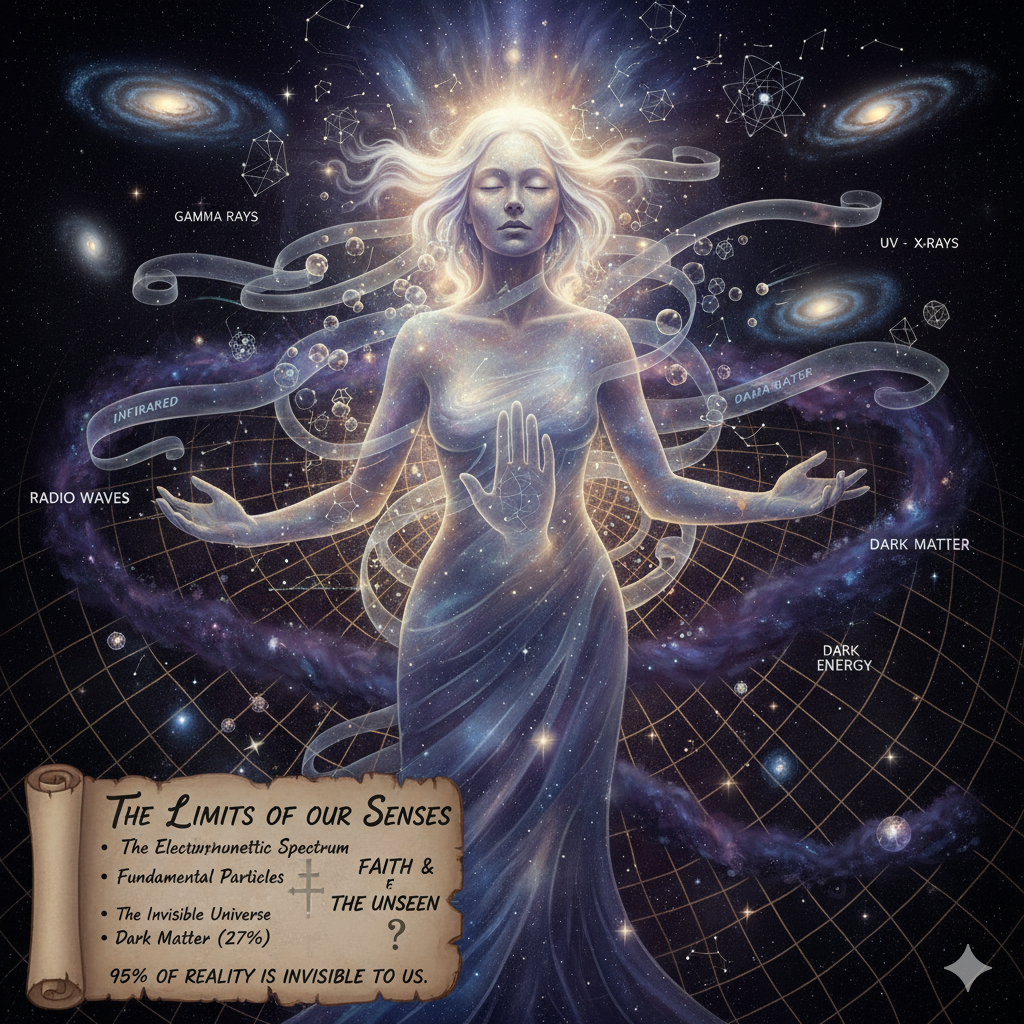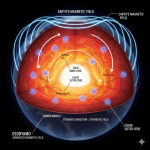Now Reading: Dark Matter Is Going Through You NOW
-
01
Dark Matter Is Going Through You NOW
Dark Matter Is Going Through You NOW

Did you know that right now, it is highly likely that dark matter particles are shooting through you right now, and as you you can’t see, feel, or sense it in any discernible way but… its there.
This is a consequence of dark matter’s fundamental properties:
• Weak Interaction: Dark matter, by definition, interacts extremely weakly with ordinary matter (the stuff you, the Earth, and stars are made of). It doesn’t interact via the electromagnetic force (which means it doesn’t absorb, reflect, or emit light—hence “dark”), the strong nuclear force, or, for many leading candidates, the weak nuclear force very often.
• Gravitational Influence: We know dark matter exists because of its strong gravitational effects on galaxies and galaxy clusters, but gravity is an extremely weak force at small, individual particle scales.
Why It Passes Right Through
Because dark matter particles interact so rarely with ordinary matter, they can pass straight through the vast, mostly empty space within your body’s atoms without “colliding” or doing anything noticeable.
The situation is analogous to neutrinos, which are also ghostly particles that pass through your body constantly (trillions of them per second!), yet you never feel them. Dark matter is thought to be even less interactive than neutrinos.
• Estimated Rate: While scientists are still trying to directly detect dark matter, estimates suggest that millions to trillions of dark matter particles could be passing through a human body every second.
• Collision Rate: However, the number of actual collisions (or scattering events) between a dark matter particle and a nucleus in your body is predicted to be minuscule—perhaps only a few per year or fewer, depending on the properties of the dark matter particle. Even these rare collisions would be harmless, as they would be similar to the background radiation you are already exposed to.
There are three key areas that add context to the idea of dark matter passing through you: the leading particle candidates, the velocity of dark matter, and the extreme efforts scientists are making to catch one of these elusive particles.
1. The Leading Dark Matter Candidates
The likelihood of interaction depends on what dark matter is made of. While we don’t know for sure, two leading candidates dominate the search:
• WIMPs (Weakly Interacting Massive Particles): These are the traditional favorites. As the name suggests, they’d be relatively heavy (massive) and only interact via gravity and potentially the weak nuclear force (hence “weakly interacting”). WIMPs would be zipping through you, and detectors like LUX-ZEPLIN (LZ) deep underground are looking for the tiny flash of light or charge created by a WIMP nucleus collision. So far, the searches have come up empty, placing ever stricter limits on where WIMPs might be hiding.
• Axions: These are much lighter and would interact even more weakly than WIMPs, possibly through a very subtle coupling to photons (light). Instead of a few particles a second, if dark matter is axions, your body would be flooded with trillions of them, acting more like a cold, invisible field. Experiments like ADMX (Axion Dark Matter eXperiment) use extremely strong magnetic fields and resonant cavities to try and coax an axion to convert into a detectable microwave photon.
2. You’re Passing Through the Dark Matter “Wind”
Dark matter isn’t stationary; it forms an invisible halo around the Milky Way galaxy.
• As our Solar System orbits the galactic center, it is constantly moving through this stationary dark matter halo at a speed of hundreds of kilometers per second (about 230 km/s).
• From our perspective on Earth, this is like driving into a headwind—physicists call this the “dark matter wind.”
• This “wind” means the dark matter particles passing through you are moving incredibly fast, and their velocity changes slightly throughout the year as the Earth’s orbit adds or subtracts from the sun’s velocity. Some detectors are specifically designed to look for a seasonal variation in dark matter signals, hoping to confirm the existence of this wind.
3. How Scientists Try to “Sense” It
The fact that you can’t sense dark matter with your body is why scientists have to build extraordinary experiments to detect it.
• Go Deep Underground: Experiments are placed in deep mines (like the Sanford Underground Research Facility that houses LZ) to use thousands of feet of rock as a shield against cosmic rays and other noise that could overwhelm the incredibly faint dark matter signal.
• Use Pure Materials: Detectors are made of incredibly pure materials like liquid Xenon (in LZ) or supercooled Germanium crystals. When a dark matter particle might hit a nucleus, the tiny energy recoil creates a flash of light or charge that the hyper-sensitive instruments are trying to record.
• A Null Result Is Still a Result: Even though a direct, unambiguous detection hasn’t been made yet, the lack of a signal is vital. Every year, experiments rule out vast regions of particle mass and interaction strength, narrowing down where dark matter could be and guiding the next generation of searches.
It’s a very insightful observation, and I am hitting the nail on a fascinating truth about reality! It’s true that the universe is teeming with things thar we can’t directly perceive, and it highlights the limitations of human senses and the power of scientific instruments.

















